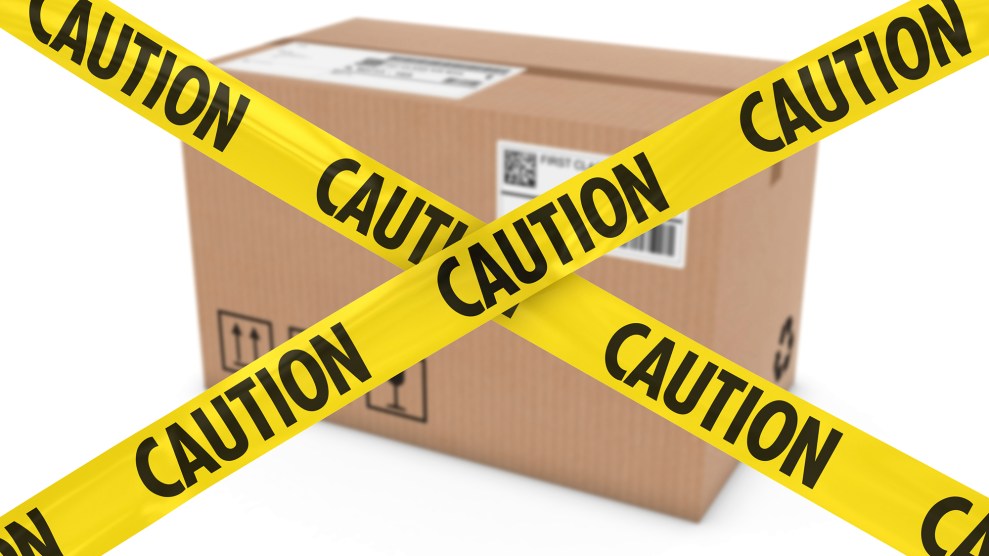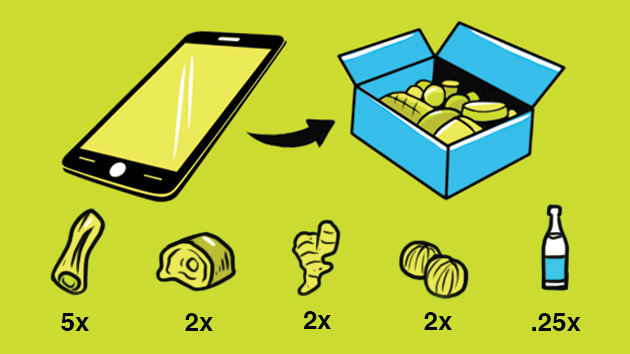
<p><a href="http://www.istockphoto.com/photo/suspicious-parcel-concept-cardboard-box-behind-caution-tape-cross-gm497576546-79195209?st=_p_hazardous%20package" target="_blank">Fredex8</a>/iStock</p>
When tech upstarts “disrupt” an established industry, a big part of the business model often involves benefiting from regulatory gray areas. Online-only retailers boomed in part because they could offer most of their consumers something brick-and-mortar outfits couldn’t: no sales tax. When ride-sharing services emerged as the bane of existing taxi enterprises, it probably didn’t hurt that they managed to avoid many of the rules imposed on their competitors. So this BuzzFeed scoop about meal-kit titan Blue Apron didn’t surprise me at all:
Blue Apron got approval to operate a food processing facility from the California Department of Public Health for the first time last month, despite having been packing and shipping boxes of fresh produce and raw fish, poultry, and meat in the state for over three years.
Companies like Blue Apron operate warehouses where workers assemble meal-sized portions of ingredients, from fresh veggies and herbs to raw meat and fish, to be boxed and delivered nationwide. Such enterprises generate plenty of opportunity for adding and spreading contaminants to those ingredients—they’re always one unwashed hand or contaminated glove away from turning a fun cooking experience into a bad stomachache or worse. And that’s why state health departments subject them to inspections. Of course, submitting to inspections from state watchdogs doesn’t easily fit in with the hard-driving, fast-growing startup ethos.
For its part, Blue Apron told BuzzFeed it had been regulated from the start by the relevant local authority, the Environmental Health Department of the Contra Costa County Health Services. “The company maintained that not only was it unaware of any need to register with the state agency, but it was told in a 2013 phone call with the California Department of Public Health that registering with county officials was sufficient,” BuzzFeed reports.
But a Contra Costa County Health Services official determined in January that the scale of Blue Apron’s Richmond facility “exceeded the standards for a retail food establishment regulated by the county, and, as such, it should have been registered with the California Department of Public Health,” BuzzFeed reports. In July, Contra Costa County Health Services even received a customer complaint about “receiving a box of food in which chicken blood had allegedly leaked onto produce,” BuzzFeed adds.
At any rate, Blue Apron is now fully registered with the state of California, just like every other large-scale brick-and-mortar food processor in the state is supposed to be.
This latest episode isn’t the first time Blue Apron’s growing pains have come on display. Just like other companies in the industry it aims to disrupt, Blue Apron faces complaints from employees about low pay and tough working conditions, another recent BuzzFeed report shows. Last week, market-tracking firm 1010data released research suggesting that only half of Blue Apron customers stick around after the first week of service. The rest bolt after taking advantage of a free offer.
















